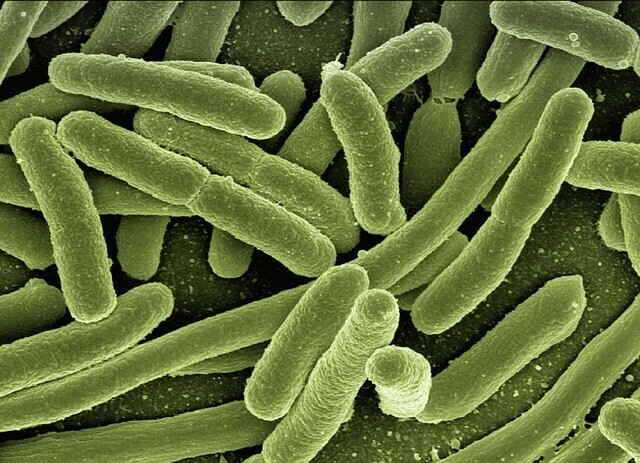Understanding the significance of microbiome diversity is crucial for our health and well-being.
You might have heard this phrase in passing before and wondered what it means.
Think of your gut as a bustling metropolis, home to trillions of microorganisms, each with a role that keeps the city thriving. This is microbiome diversity, a term that refers to the variety and abundance of these microscopic inhabitants.
Our gut health is not just about digestion; it’s a key player in our overall well-being. Like a personalized medicine cabinet, a diverse microbiome supports metabolism, aids nutrient absorption, and helps keep harmful pathogens at bay.
A lot happens quickly in your gut; this dynamic environment can influence everything from your mood to your immune system.
When the diversity of your microbiome diminishes, it can have far-reaching effects on your body, potentially leading to weight gain, chronic diseases, and even mental health issues.
This underscores the importance of maintaining a diverse microbiome.
In this article, we will dive deeper into microbiome diversity and how intermittent fasting can be a bonus to improving diversity.
What is Microbiome Diversity?

Microbiome diversity is the variety and abundance of microorganisms living in a particular environment, especially the human gut, such as bacteria, viruses, fungi, and other microbes.
Unless otherwise told, assume that microbiome diversity refers to your or a person’s gut.
Imagine your gut as a bustling city with many different neighborhoods inhabited by various microbes. The more diverse these neighborhoods are, the healthier the city (your gut) tends to be.
Like a forest with many different plants and animals is healthier and more resilient, your gut is more nutritious when it has a wide range of these microbes.
Diversity is great because it helps with digestion, keeps your immune system strong, and can influence your mood and overall well-being.
Benefits of Microbiome Diversity
- Enhanced Immune Function: A diverse microbiome helps the immune system recognize harmful pathogens and reduces inflammation.
- Improved Digestion: Different microbes aid in breaking down various types of food, leading to better nutrient absorption.
- Mental Health: The gut-brain axis, a bidirectional communication system between the gut and the brain, links gut health to mental health. A diverse microbiome can help regulate mood and reduce the risk of anxiety and depression.
- Better Outcomes in Chronic Diseases: A lack of good diversity in the gut microbiome is associated with allergic disorders, obesity, Parkinson’s, and irritable bowel syndrome, among others.
In the next section, I’m here to help you with strategies to enhance this diversity. These will include dietary adjustments, the role of probiotics, and various lifestyle practices that contribute to a happier, healthier gut environment.
Strategies to Enhance Microbiome Diversity
You’re probably wondering if it’s possible to enhance the diversity of your microbiome.
The answer is yes, and there are several ways to do it.
Nutrition
Diet, in general, plays a crucial role in maintaining a thriving gut ecosystem.
Opting for a wide variety of fiber-rich foods such as fruits, vegetables, and whole grains can lead to a more varied gut microbiota. These foods fuel beneficial gut bacteria, allowing them to flourish.
Highly processed foods often contain artificial additives and lack the fiber and nutrients to support gut health.
Fermentation
Fermented foods are also champions of gut health. Products like yogurt, kefir, sauerkraut, and kimchi introduce friendly bacteria into your gut, which can help increase microbial diversity. Including these in your regular diet is a simple step with potential benefits for your microbiome.
Probiotics
Probiotics have been a buzzword for a while, and for good reason. They consist of live bacteria and yeasts that can confer health benefits, especially to the digestive system. They do this by controlling the microorganisms in your gut and reducing disease-causing bacteria from releasing toxic compounds in the gut.
However, when choosing probiotics, it’s essential to go for quality. Aim for reputable sources and proven scientifically effective strains, such as Lactobacillus, Bifidobacterium, and Enterococcus.
Prebiotics
Prebiotics, on the other hand, are the unsung heroes. They are non-digestible fibers that our gut bacteria feed on, which help stimulate their growth and activity.
Think of them as the fertilizer that helps your gut garden bloom.
Foods high in prebiotics include garlic, onions, leeks, asparagus, chicory, Jerusalem artichoke, oats, wheat, and bananas.
Minimal Antibiotics
Antibiotics can disrupt the balance of your gut microbiome by killing harmful and beneficial bacteria, so it’s essential to use them only when necessary.
If you have an infection and need antibiotics, you should take them as prescribed. Your healthcare provider will discuss with you the necessary time to take antibiotics. They also don’t want you to affect your microbiome too much.
Lifestyle
Don’t overlook the powerful impact of lifestyle factors.
Managing stress, getting enough sleep, and regular exercise are essential in maintaining a healthy microbiome. Stress, in particular, can alter the composition of your gut bacteria, so finding effective ways to manage it is vital.
What’s intriguing is the link between fasting and the microbiome, which I will touch on next. Intermittent fasting isn’t just a trend; there’s growing evidence it could be an invaluable tool for microbiome diversity and overall gut health.
Intermittent Fasting: A Tool for Gut Health Reset

Intermittent fasting isn’t just about weight loss; it’s also a compelling strategy to enhance the diversity of your gut microbiome.
Now, what exactly does fasting do to the gut?
It gives your digestive system a break, allowing your gut bacteria to perform maintenance and repair. During fasting periods, the composition of the gut microbiota can change, favoring the growth of beneficial bacteria.
Different fasting methods, such as 16:8 or 5:2, offer varied benefits, but each can contribute positively to your gut ecosystem.
The body’s response to fasting can range from reduced inflammation to improved digestion and beyond, which can collectively foster a more diverse microbiome.
And here’s the kicker: some studies suggest intermittent fasting may act as a ‘reset’ button for your gut health. By altering how your body metabolizes food and the type of nutrients your gut bacteria feast on, fasting may help cultivate a healthier, more resilient microbiota arrangement.
Implementing Intermittent Fasting For Microbiome Diversity

There are practical ways to incorporate intermittent fasting and probiotics into your daily life to promote a thriving gut ecosystem.
1. Choose an Intermittent Fasting Method:
Intermittent fasting isn’t a one-size-fits-all approach. You can constantly adjust your strategy, but starting with the most common method, the 16:8 approach, is a good idea. It involves fasting for 16 hours and eating within an 8-hour window. If you aren’t sure which method to try, check out this article.
2. Start Slow:
If you’re new to fasting, ease into it. Begin with a shorter fasting period and gradually increase.
3. Focus on Nutrition During Eating Windows:
To nourish your gut bacteria, include a variety of whole foods, especially high-fiber vegetables, fruits, whole grains, legumes, nuts, and seeds.
Add fermented foods like yogurt, kefir, sauerkraut, and kimchi, as well as probiotics and prebiotics.
Don’t forget to drink plenty of water, herbal teas, or broth during fasting to support your body and gut health. If you are still deciding what to drink with Intermittent Fasting, check this out.
4. Pay Attention to Your Body:
During your eating window, you should eat until you’re satisfied but not overly full. Fasting should be balanced with proper nutrition.
Ensure you’re maintaining your energy and focus throughout the day. If you feel too tired, consider adjusting your fasting window.
5. Combine with Other Healthy Habits:
Engaging in physical activity can further support gut health and microbiome diversity.
Ensure you get enough sleep, as rest is crucial for overall health and well-being.
6. Be Consistent:
Remember, though, that the key is consistency.
Stick with your plan, make adjustments as necessary, and monitor how your body responds.
The journey towards enhanced gut health is an ongoing process.
Your first attempt doesn’t need to be your last. Don’t focus too much on perfection; aim for steady improvement.
Please feel empowered to make these modifications to your routine.
Soon enough, you’ll potentially notice positive shifts in your health that make the effort worth it.
Happy Fasting!
